Updated 8 Sep 2008
|
Planting a new oakwood in Dorset
|
|
The photos on this webpage are taken from the most delightful
Hainault Forest website. The text is largely from Oaks and Oakwoods by A.G Tansley, published in 1952. My thanks to both these sources in opening my eyes to the "funny things" growing on the oaks in my Plantation.
A survey of my own 300 oaks planted in 2000/2002 indicates the galls found.
|
Where Galls come from
|
Oak apple Biorrhiza paillda
See 22, 23, 24
and 33
The oak-apple...is formed by the gall-wasp...which pierces the terminal buds of the leafless twigs in January, laying numerous eggs...The eggs hatch at the beginning of May and on the emergence of the larvae begins to grow and completes its development about the end of the month...The wasps emerge in July...The fertilized female crawls down the tree, enters the soil and pierces young oak roots in which she lays her eggs. When these hatch into larvae, hard brown spherical galls up to half an inch in diameter are formed on the young root...In January the wasp is mature and bores through the hard wall of the root-gall, pushes through the overlying earth, crawls up the trunk of the leafless tree in search of suitable terminal buds...
Currant gall Neuterus baccarum
See 09 and 10
Formed on the male catkins when they appear in May. These are of the size, shape and colour of red currants, a bunch of which is closely imitated when an oak catkin is crowded with the galls. The wasps develop in them with great rapidity and most have emerged by the end of June. The summer galls may also be formed on the leaves, where they are larger and green, not red. The fertilized female wasp then attacks the lower surface of the leaves, causing the very common disc-shaped
spangle galls to appear in July. These are of a beautiful red colour, at first with a central umbo, and sometimes cover the undersurface of the leaf very thickly, causing it to wither prematurely. In September the spangle gallsbecome detached, fall to the ground and round off, the contained larvae continuing to grow through the winter. The wasps appear in April and attack the catkins or leaves, producing the summer currant galls.
|
01 Acorn Gall
Callirhytis Erythrocephala
 |
02 Acorn Gall
Callirhytis Erythrocephala
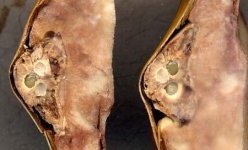 |
03 Gall on acorn cup
Andricus Grossulariae
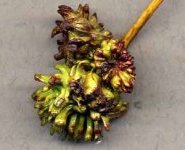 |
04 Artichoke Gall
Andricus Fecundator
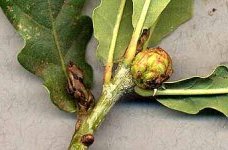
2008 |
05 Bud Gall
Andricus Solitarius

2008 |
06 Cherry Gall
Cynips Quercusfolii
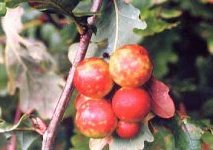
2008 |
07 Cola Nut Gall
Andricus Lignicola
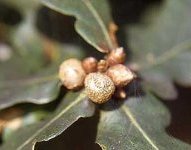
2008 |
08 Cola Nut Gall
Andricus Lignicola
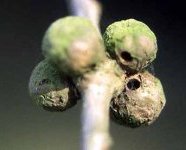
2008 |
09 Common Spangle Gall
Neuroterus Quercusbaccarum
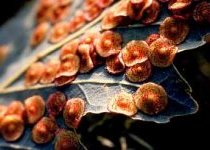
2008 |
10 Currant Gall
Andricus Quercusbaccarum
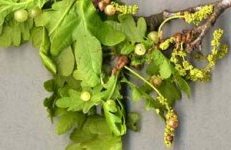 |
11 Distorted Leaf Gall
Andricus Curvator
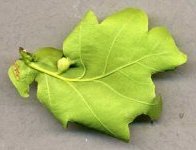 |
12 Ramshorn Gall
Andricus Aries
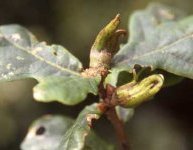
2008 |
13 Catkin Gall
Andricus Aprilinus
 |
14 Gooseberry Gall
Andricus Grossulariae
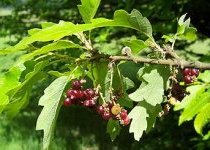 |
15 Hedgehog Gall
Andricus Lucidus
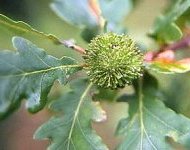 |
16 Knopper Gall
Andricus Quercuscalicis
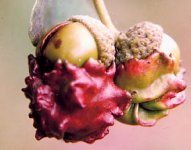 |
17 Knopper Gall
Andricus Quercuscalicis
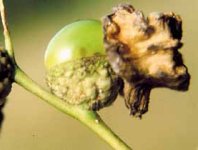 |
18 Knopper Gall
Andricus Quercuscalicis
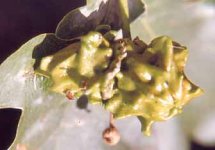 |
19 Lateral Bud Gall
Andricus Inflator
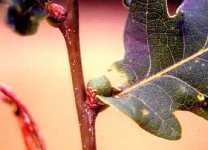 |
20 Sea Anemone Gall
Neuroterus Saliens
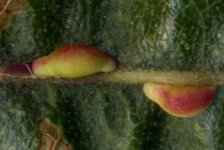 |
21 Barnacle Gall
Andricus Testacaipes
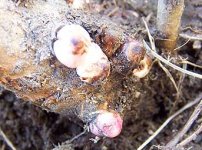 |
22 Oak Apple
Biorhiza Pallida
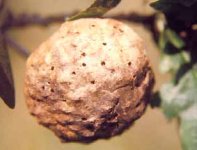 |
23 Oak Apples
Biorhiza Pallida
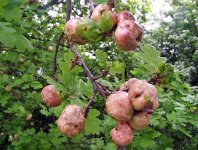 |
24 Oak Apple
Biorhiza Pallida
 |
25 Leaf vein lobe folded down
Macrodryplosis Dryobia
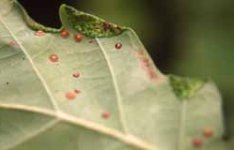
2008 |
26 Tightupward roll between lobes
Macrodiplosis Volvens
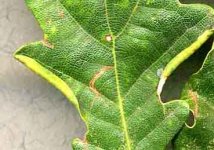 |
27 Oak Marble Gall
Andricus Kollari
 |
28 Oak Marble Gall
Andricus Kollari
 |
29 Oyster Gall
Neuroterus Anthracinus
 |
30 Ramshorn Gall
Andricus Aries

2008 |
31 Ramshorn Gall
Andricus Aries

2008 |
32 Gall on acorn cup
Andricus Grossulariae
 |
33 Root Gall
Biorhiza Pallida
 |
34 Sea Anemone Gall
Neuroterus Saliens
 |
35 Silk Button Gall
Neuroterus Numismalis
 |
36 Small Pea Gall
Cynips Divisa
 |
37 Small Pea Gall
Cynips Divisa
 |
38 Smooth Spangle Gall
Neuroterus Albipes
 |
39 Striped Pea Gall
Cynips Longiventris
 |
40 Swollen tip of twig
Andricus Inflator
 |
41 Truffle Gall
Andricus Quercusradicis
 |
42 Asterix Gall
Andricus asterix
 |
Compiled, formatted, hyperlinked, encoded,
and copyright © 2006,
John Palmer, All Rights Reserved.
All Rights Reserved.
|